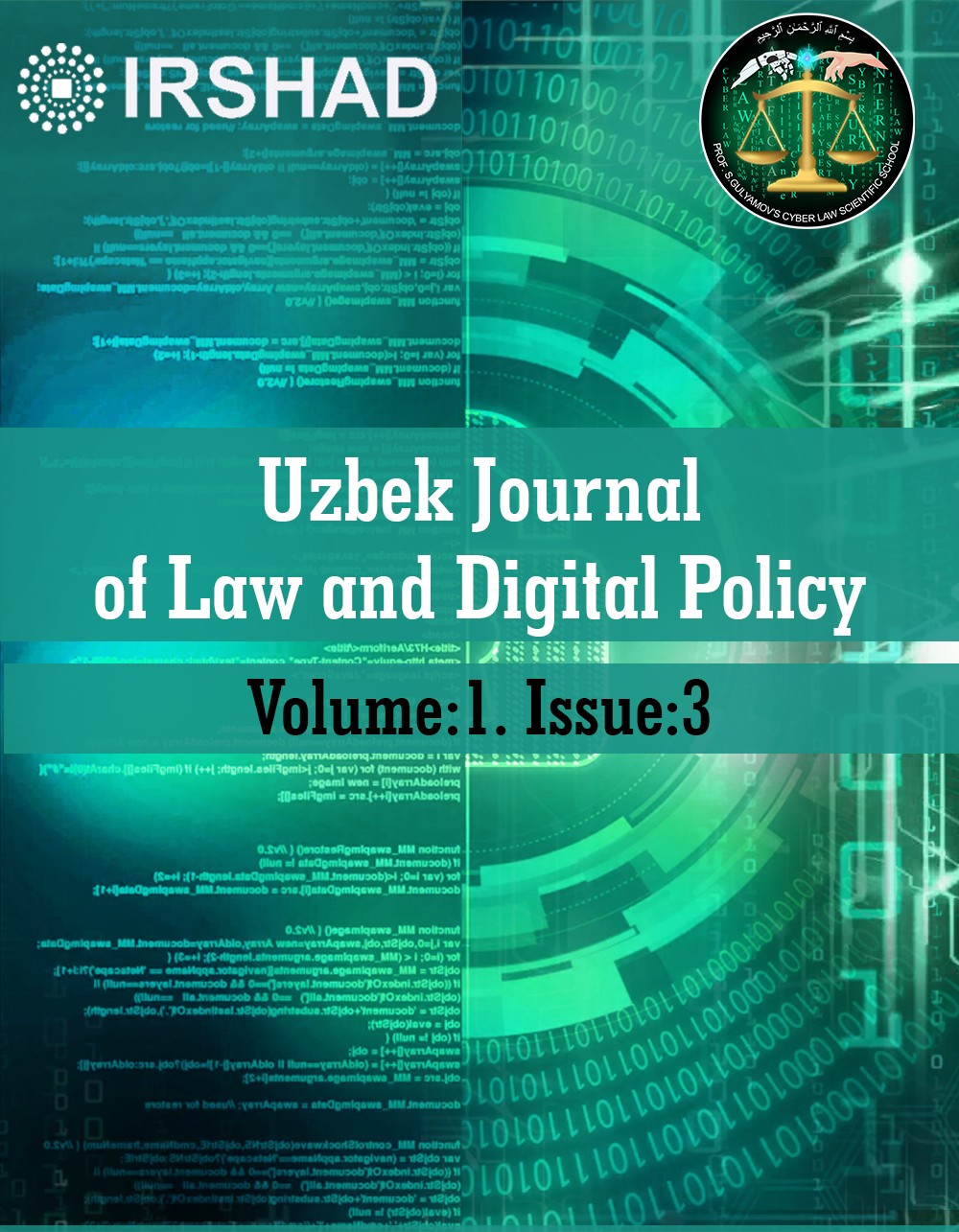Artificial Intelligence as a Legal Entity: A Balanced Examination of Pros and Cons
DOI:
https://doi.org/10.59022/ujldp.86Keywords:
Artificial Intelligence, Legal Entity, Accountability, Regulation, Ethical Dilemmas, Legal Complexities, Human Oversight, Interdisciplinary DialogueAbstract
Artificial Intelligence (AI) is increasingly pervasive in society, prompting debates about its legal status. This paper explores the positive and negative aspects of recognizing AI as a legal entity. It presents the potential advantages, including improved accountability and effective regulation, and highlights the disadvantages, such as ethical dilemmas and legal complexities. Utilizing legal and philosophical methodologies, the study identifies a central problem: the need for a balanced perspective that recognizes the potential benefits and inherent risks of acknowledging AI as a legal entity. Proposed solutions include the development of a separate legal status for AI, a phased approach for integrating AI into existing legal systems, and maintaining some form of human oversight and accountability. The paper underscores the need for interdisciplinary dialogue and suggests avenues for future research, including empirical studies and ethical analyses. As AI continues to advance, understanding its legal implications is of vital importance.
References
Bryson, J., Diamantis, M., & Grant, T. (2017). Of, for, and by the people: the legal lacuna of synthetic persons. Artificial Intelligence and Law, 25(3), 273-291. https://doi.org/10.1007/s10506-017-9214-9
Bryson, J. (2010). Robots should be slaves. Close Engagements with Artificial Companions: Key Social, Psychological, Ethical and Design Issues, 63-74. https://www.researchgate.net/publication/220934289_Robots_Should_Be_Slaves
Allah Rakha, N. (2023). The Ethics of Data Mining: Lessons from the Cambridge Analytica Scandal. Cyber Law Review, 1(1). https://doi.org/10.59022/clr.24 retrieved from https://irshadjournals.com/index.php/ijcl/article/view/24
Brownsword, R. (2008). Rights, Regulation and the Technological Revolution. Oxford University Press. https://www.oxfordscholarship.com/view/10.1093/acprof:oso/9780199276806.001.0001/acprof-9780199276806
Allah Rakha, N. (2023). Navigating the Legal Landscape: Corporate Governance and Anti-Corruption Compliance in the Digital Age. International Journal of Management and Finance, 1(3). https://doi.org/10.59022/ijmf.39 Retrieved from https://irshadjournals.com/index.php/ijmf/article/view/39
Calo, R. (2016). Artificial Intelligence Policy: A Primer and Roadmap. SSRN Electronic Journal. https://doi.org/10.2139/ssrn.3015350
Allah Rakha, N. (2023). The impact of Artificial Intelligence (AI) on business and its regulatory challenges. International Journal of Law and Policy, 1(1). https://doi.org/10.59022/ijlp.23 retrieved from https://irshadjournals.com/index.php/ijlp/article/view/23
Hart, H. L. A. (2012). The Concept of Law. Oxford University Press. https://global.oup.com/academic/product/the-concept-of-law-9780199644704
Kerr, I. (2015). Bots, Babes and the Californication of Commerce. University of Ottawa Law & Technology Journal, 2(1). https://www.researchgate.net/publication/228125054_Bots_Babes_and_the_Californication_of_Commerce
Allah Rakha, N. (2023). Artificial Intelligence and Sustainability. International Journal of Cyber Law, 1(3). https://doi.org/10.59022/ijcl.42 retrieved from https://irshadjournals.com/index.php/ijcl/article/view/42
Matthias, A. (2004). The responsibility gap: Ascribing responsibility for the actions of learning automata. Ethics and Information Technology, 6(3), 175-183. https://doi.org/10.1007/s10676-004-3422-1
Pagallo, U. (2013). Robots in the cloud with privacy: a new threat to data protection? Computer Law & Security Review, 29(5), 501-508. https://doi.org/10.1016/j.clsr.2013.07.008
Russell, S., & Norvig, P. (2016). Artificial Intelligence: A Modern Approach. Pearson. https://www.pearson.com/us/higher-education/program/Russell-Artificial-Intelligence-A-Modern-Approach-3rd-Edition/PGM335848.html
Singer, P. (2011). Practical Ethics. Cambridge University Press. https://www.cambridge.org/core/books/practical-ethics/0C3FB4C4BE4E0E9A4E75114A8FE1493F
Zweigert, K., & Kötz, H. (1998). Introduction to Comparative Law. Oxford University Press. https://global.oup.com/academic/product/an-introduction-to-comparative-law-9780198268598
Allah Rakha, Naeem, “HOW THE EU CREATES LAWS”. Eurasian Journal of Law, Finance and Applied Sciences, Vol 2, Issue No. 6 (2022), pp. 4-9, https://doi.org/10.5281/zenodo.6615907
Gulyamov, S., Rustambekov, I., Narziev, O., & Xudayberganov, A. (2021). Draft Concept of the Republic of Uzbekistan in the Field of Development Artificial Intelligence for 2021-2030. Yurisprudensiya, 1, 107-21.
Downloads
Published
How to Cite
Issue
Section
License
Copyright (c) 2023 Uzbek Journal of Law and Digital Policy

This work is licensed under a Creative Commons Attribution 4.0 International License.




